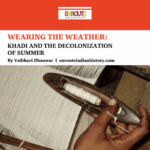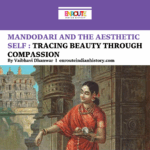The Oldest Sky Chart And First Record Of Supernova is in India?
- EIH User
- April 6, 2023
Article Written By EIH Researcher And Writer
Rayana Rose Sabu
Archaeoastronomy studies traditional or ancient astronomies in their cultural context, drawing on archival, anthropological, and archaeological data. The topic analyses historical accounts of celestial occurrences to deduce the astronomical expertise of our predecessors. Archaeoastronomy also assesses astronomical traditions based on monuments and written sources. It is significant because it gives us a glimpse into prehistoric eras and the astronomical knowledge prevalent at that time. In other words, prehistoric astronomical practices can be found via archaeoastronomy.
Burzahom was one of the most well-known and the first Neolithic sites in Kashmir. It is around 5 miles from the famous Mughal garden of Shalimar and situated on a “karewa” between the Dal Lake shoreline and the Zabarvan hills. The area is surrounded by the glittering waters of Dal Lake to the south, the glaciated summit of Mahadev Mountain to the east, and the west are mountain ranges. The Burzahom plateau was continually inhabited from the Stone Age [2400 B.C.] until the Early Historical period thanks to a plentiful supply of food from the trees on the Himalayan foothills, an abundant water supply from the lake, and an elevated location shielded from seasonal flooding. Over time, the population evolved from hunter-gatherers living in pits to an agricultural community that produced pottery. Carbon dating places the site’s active era between 5000 and 1500 BC. Burzahom, meaning “place of birch,” refers to underground housing pits that likely had a thatched birch covering before evolving into mud homes.
One of the main reasons why Burzahom is so famous is because this historical location is renowned for a rock carving that was found there and depicts two hunters chasing a stag as twin suns blaze in the sky. The engraving on the slab shows hunting scenes, including a hunter piercing an antlered deer from behind with a long spear and another hunter shooting an arrow from the front. The interpretation, however, was flawed; the craving was not a terrestrial hunting scene; in fact, it was a sky map depicting the positions of important constellations, the Moon, and a sky map from the night a supernova was seen. One of the hunters in this illustration is Orion; the middle animal is Taurus; the hunter to the right may have evolved from stars in Cetus, and the other animal to the right may be Andromeda and Pegasus. If this theory is to be believed, it will represent the first record of a supernova and the oldest sky chart ever discovered!
Another site of archeoastronomy is Bomai, located in the northern part of Kashmir. Between 2000 and 6000, the Upper Palaeolithic people lived in this area. A noticeable rock sculpture at the northwest corner of a plateau rises to a height of 3000 metres, with peaks rising to around 3,500 metres to the southeast. The granite surface, which features numerous concentric circles, lies on a mountainside about 100 metres away from the fields and looks over the eastern shore of the renowned Wular Lake. This rock carving represents a meteorite impact between 40,000 and 6,000 before the present. There are several reasons to believe this scene depicts a comet impact sequence.
The concentric circles depict bright objects in rock carvings, and it is indicative of the brightness. The circles drawn are not drawn in any specific geometric pattern and appear random. Therefore, the rock carving is said to depict crater lake formation due to the meteor’s impact.
In Maharashtra, over 300 stone circles were excavated in Junapani, Nagpur, and about 150 of these circles have been investigated and documented. The numerous artefacts discovered proved it was a burial site, but the cup-shaped stones in the rings also imply astrological significance. A few of the rocks that make up the Junapani stone circles have cup marks, also known as cupules. The cupule-adorned stones are arranged around the circles in a way that suggests they serve as markers for particular compass directions, such as the direction of the winter solstice sunrise. Archaeologists have speculated that the location has astronomical importance due to this. A pre-1000 B.C. astronomy tradition in India may be reflected in the Junapani stone circles. The Vedanga Jyotisha, purportedly written by an astronomer named Lagadha, is the earliest astronomical work in India. Based on internal data on the documented celestial positions of the winter solstice and the summer solstice at the period, the work was composed approximately 1350 BC, several centuries before the first stone circles in Junapani were probably built.
Another archaeoastronomical monument in Telangana is Mudumal, dubbed the only Megalithic site in India to represent a star constellation from 5000 BC. The historians and archaeologists who also think that this is “undoubtedly the first astronomical observatory uncovered in India or even in South Asia” assert that no other site in India has as many menhirs concentrated in one location. There was a cup-mark image of Ursa Major on a square stone set vertically. The arrangement of about thirty cup marks resembled how Ursa Major appears in the sky. Images of both the periphery’s star clusters and the conspicuous seven stars are present on the menhirs.
These sites show how astronomy has always had a sense of intrigue, an elusive twinkle, and a pinch of the unknown. We may still be light years away from learning the secrets of the cosmos, so in the meantime, we’ll have to content ourselves with admiring these magnificent inscriptions carved into the rocks.
Bibliography
Iqbal, N., Vahia, M. N., Masood, T., & Ahmad, A. (2009). SOME EARLY ASTRONOMICAL SITES IN THE KASHMIR REGION. Journal of Astronomical History and Heritage, 12(1), 61–65. https://doi.org/10.3724/sp.j.1440-2807.2009.01.05
Vahia, M. N., A Banday, A., Ahmad Yatoo, M., Iqbal, N., & Masood Bhat, T. (n.d.). Astronomical interpretation of a Palaeolithic rock carving found at Sopor, Kashmir [Review of Astronomical interpretation of a Palaeolithic rock carving found at Sopor, Kashmir]. https://www.hindustantimes.com/static/ht2018/1/comets.pdf
Megalith from 5000 bc found in telangana. (2016, October 24). The Times of India. https://timesofindia.indiatimes.com/city/hyderabad/megalith-from-5000-bc-found-in-telangana/articleshow/55030266.cms
Strom, C. (n.d.). Junapani Stone Circles: India’s Astronomical Megalithic Tombs. Www.ancient-Origins.net. https://www.ancient-origins.net/ancient-places-asia/junapani-stone-circles-0014945
Archaeology and Astronomy at Burzahom | JustJu. (n.d.). Retrieved March 28, 2023, from http://kashmirnetwork.com/justju/?p=1226
















